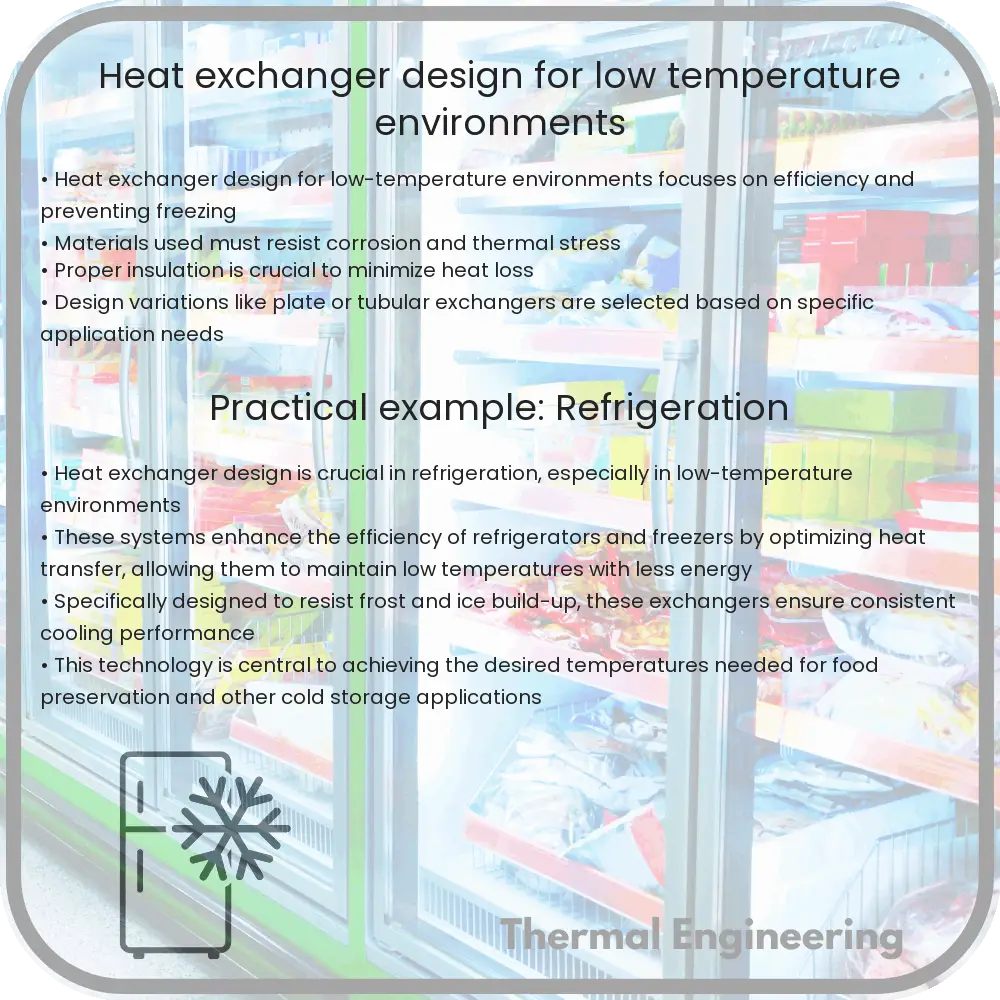Learn about heat exchanger design for low-temperature environments, focusing on material selection, thermal stress, and optimization techniques.

Understanding Heat Exchanger Design for Low-Temperature Environments
Heat exchangers are crucial components used in engineering to transfer heat between two or more fluids and are utilized in various applications from heating and cooling in industrial processes to energy generation and refrigeration. Designing heat exchangers for low-temperature environments poses unique challenges that require careful consideration of materials, thermodynamics, and environmental impact. This article provides an overview of these design considerations with a focus on optimizing performance and efficiency.
Key Factors in Designing Heat Exchangers for Cold Climates
When designing heat exchangers for low-temperature environments, such as in polar regions or in high-altitude settings, several factors must be prioritized to ensure efficient operation and durability:
- Material Selection: The materials used in constructing heat exchangers must be capable of withstanding low temperatures without becoming brittle. Common materials include stainless steel and aluminum due to their durable nature and excellent thermal conductivity.
- Thermal Stress Management: Low temperatures can induce substantial thermal stresses within the heat exchanger due to differential contraction of materials. Proper design must accommodate these stresses to prevent structural failures.
- Fouling: In colder environments, the risk of fouling—where impurities accumulate on the heat exchanger surfaces—increases due to the reduced temperatures affecting fluid properties. This can diminish thermal performance and requires regular maintenance or self-cleaning designs.
- Fluid Selection: The type of fluid used can impact the heat exchanger’s effectiveness and efficiency. For low-temperature operations, fluids like glycol mixtures or synthetic oils, which have lower freezing points, are preferred.
Optimization Techniques in Heat Exchanger Design
Optimization of heat exchangers in low-temperature environments not only focuses on the prevention of operational failures but also aims to enhance energy efficiency and reduce costs. Some common strategies include:
- Counterflow Configuration: Utilizing a counterflow arrangement where the hot and cold fluids move in opposite directions can maximize the temperature gradient, thus enhancing the heat transfer efficiency.
- Minimizing Size: Designing compact heat exchangers can help in managing costs and improving the operational feasibility in remote or space-constrained environments.
- Using Fins: Incorporating fins in the design increases the surface area for heat transfer, effectively improving the heat exchanger’s performance.
Case Study: Application in Renewable Energy
Heat exchangers are integral to the operation of renewable energy systems, such as geothermal power stations or bioenergy plants operating in cold climates. For instance, in geothermal heating systems, heat exchangers play a critical role in transferring geothermal heat to the working fluid. Here, the design must ensure that the heat exchanger can function efficiently at the low ambient temperatures, without losing significant heat to the surroundings.
Conclusion
Designing heat exchangers for low-temperature environments demands a multidisciplinary approach encompassing material science, fluid mechanics, and thermodynamics. By focusing on the proper selection of materials, optimizing design configurations, and regularly assessing operational challenges like fouling, engineers can create effective and efficient systems suitable for the unique demands of cold climates. As technology advances, ongoing research and development are expected to further enhance heat exchanger performance, making them even more viable for a wider range of applications in challenging environmental conditions.